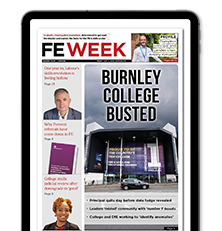Broadening the curriculum and bridging the divide between academic and technical qualifications are welcome ambitions within the Advanced British Standard (ABS). Research is clear that broader curriculums benefit students in numerous ways, and a high-quality skills system relies on establishing greater parity between academic and technical routes into employment. Colleges clearly could be well placed to deliver such a framework, with many already offering a high-quality mixture of academic and technical subjects.
However, it’s clear that such ambitious reform will require equally ambitious investment and planning. Given estimates suggest college spending per student in 2024-25 will be about 10 per cent below 2010–11 levels, further funding will be needed to help colleges make the ABS a success. Luminate Education Group is one of the country’s largest groups of colleges and while we’re broadly supportive of the vision behind the ABS, there are challenges that we’re eager to work with policymakers to solve.
Putting what is a predominantly positive vision for 16-19 education aside, it’s important to recognise that the proposals are largely unachievable within current conditions. Simply put, there aren’t sufficient teachers or capacity within our education settings to deliver the increase in teaching hours and assessments that form part of this broader curriculum.
Attracting additional teachers
The long-standing and well-reported challenges in recruiting and retaining teachers cannot be ignored. Last year’s inaugural release of the Department for Education’s annual statistics on the further education (FE) workforce revealed an average of 5.5 per cent of all teaching positions to be vacant across FE providers. Shortages are particularly felt within subjects like maths, physics, construction and engineering. The far higher pay of competitor occupations within these areas makes attracting teachers tremendously difficult.
As evident through the welcome introduction of £6,000 per year incentive payments for teachers of shortage subjects in their first five years, meeting even current demand presents an uphill battle. The ABS only increases this demand. Whether it be facilitating higher numbers of students opting to take a technical qualification or accounting for vast amounts more maths teaching, remedying recruitment and retention shortfalls will be vital.
Provided workforce demands can be met, ensuring some study of maths and English to age 18 has real promise. However, given core maths is complex to teach, upskilling current maths teachers would be needed to meet expected demand. Alongside maths and English, there must also be a focus on embedding digital skills throughout the broader curriculum.
Creating space to learn
At Leeds City College, we host over 20,000 learners and already operate at maximum capacity. Given projections for 200,000 additional 16-18 students by 2030, colleges will require more space. This is particularly acute in cities like Leeds, where there are already higher than average numbers of NEET young people. Investment will be needed to grow capacity, so colleges can offer the space more teaching time across a greater number of subjects requires.
Similarly, a broader curriculum naturally necessitates more assessments. Exam arrangements already pose a significant challenge for the sector. Alongside increasing capacity, there should also be a review of how to enable coordinated approaches within certain geographical areas so resources and space can be used efficiently.
The strong preference for summative, end-point-assessments within the ABS should also be avoided. Continuous forms of assessment could present a solution to assessment-based space constraints as well as a more effective means to judge learner ability, at least in technical subjects.
Unforgotten opportunities
In the early 2000s, the Tomlinson Report sought to move us away from exam-centric assessment. While the ABS proposals acknowledge the importance of practical skills, their emphasis on exam-based assessment undermines the value and practicality offered through a more holistic approach to assessment.
It’s also worth remembering that Tomlinson’s proposals focused on learners aged 14-19. To create greater parity between academic and technical forms of education, there might also be merit in exploring how best to introduce technical options of study from age 14 onwards.
The current ABS proposals are highly ambitious. Melding academic and technical qualifications into a single, broader framework would provide a serious upgrade to our post-16 landscape. To do so, it will need to be implemented correctly – and colleges can play a central role in ensuring its success.














Your thoughts